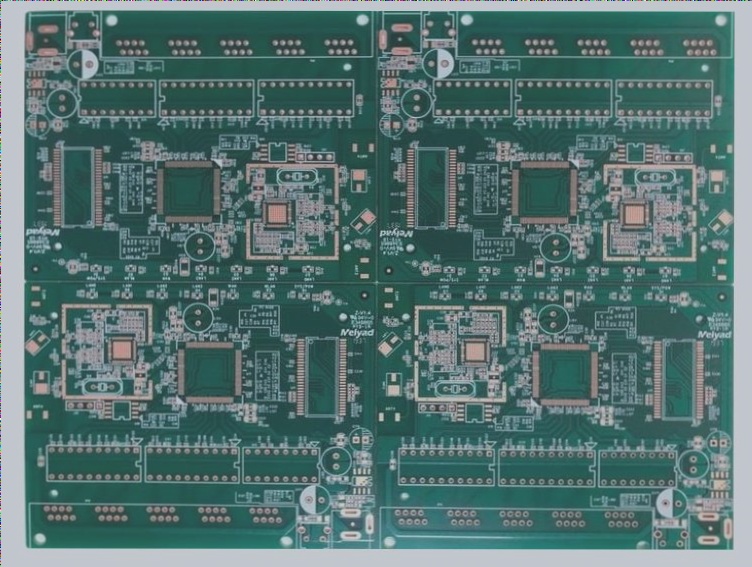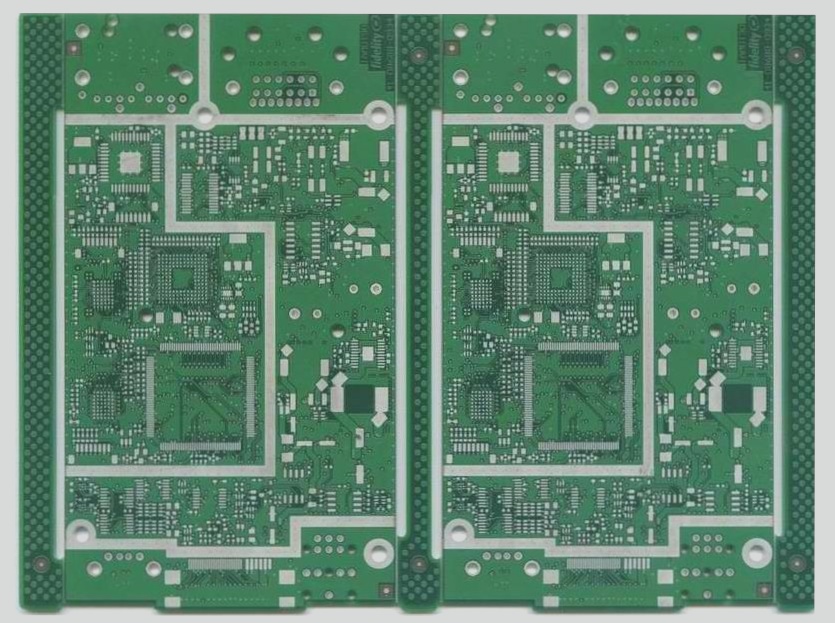(2) The soldering process was tested using a variety of solder pastes, including lead-free and lead-based options, to determine the best performance for FR-4 PCB structure. The soldering back process was also examined to ensure proper adhesion and consistency across the board.
(3) Trial production runs were conducted to test the welding process, including automated and manual methods. Different parameters such as temperature, time, and pressure were varied to find the optimal settings for achieving strong and reliable welds.
(4) After the trial production and test welding, the results were analyzed to identify any issues or inconsistencies in the soldering and welding processes. Adjustments were made to the equipment and parameters as needed to improve the overall quality and reliability of the PCB assembly.
(5) The final production run will incorporate the findings from the trial production and test welding to ensure that the FR-4 PCB structure and soldering processes meet the highest industry standards for performance and durability.

(2) Microsection analysis
Following repeated back-welding and multiple plate bursts, a failure analysis was conducted on the plate burst zone. The following details the findings from the equivalent section.
(3) Discussion
Following the initial reflow, several significant observations emerged: the reflow curve is prone to explosion if the temperature rises too rapidly, and it is unclear if a rapid temperature drop is related to the explosion. Furthermore, the author believes that the reflow curve utilized by the fr4 PCB company mentioned above is not suitable. Such a straight up and down curve without saddle heat absorption is only appropriate for the reflow of low-order plates and simple parts. For complex multilayers, a curve with saddle or long saddle heat absorption should be adopted to ensure the plate body is at a uniform internal and external temperature before completing rapid temperature action.
Second trial production and test welding
The plates in the second test contained a mix of Dicy and PN hardeners, with the results demonstrating the superior heat resistance of PN over Dicy. Additionally, several factors affecting lead-free welding and causing plate bursts were identified, including the pressing process, post-pressing baking, water absorption of the inner layer plate, water absorption of the finished plate, and the degree of resin polymerization. During the production process of fr4 PCB, two types of plates, Dicy hardening and PN hardening, were used for plate A. While two different pressing processes were also tested, they were found to have little effect on the results. Conversely, the baking of an empty plate before welding directly impacted the plate bursts, with a baking condition of 125 ℃ for a total of 24 hours. The survival rate of plates after lead-free back-welding was later documented.
(1) Discussion
When FR-4 is hardened by Dicy, plate bursting is characterized by simultaneous cracking across the entire plate, while PN hardening results in localized cracks in the porous area of the abdominal bottom. Dicy-hardened plates burst after two rounds of back-welding, regardless of pre-welding baking. However, PN-hardened plates that underwent pre-welding baking demonstrated a 50% survival rate after four reflows. This indicates that Dicy is not easily able to withstand thermal stress due to its significant polarity and susceptibility to water absorption. Conversely, PN’s minimal polarity and low water absorption, as well as an addition amount exceeding 20% bywt, significantly altered the linear nature of epoxy resin and resulted in the three-dimensional structural strength of phenolic resin, making it resistant to cracking under strong heat.
Third trial production and test welding
(1) Preparation for test
In the third test, all plates were transitioned to hardened type, and improvements were made to the PCB board process. To enhance the yield of lead-free back-welding, all finished inner plates were intentionally baked at 110 ℃ for 3 hours, while outer plates were baked at 150 ℃ for 4 hours after removing the adhesive residue. Additionally, the eight plates of the 22 layers were electroplated nickel gold instead of ENIG for surface treatment. In total, six batches of 15 boards were produced in each batch, with six boards deliberately baked at 125 ℃ for an additional 24 hours before reflow, while the other six were not baked before reflow for comparison. Furthermore, two plates were selected from each batch to undergo tin drift thermal stress testing, Tg measurement, T260/T288 testing, and simulated reflow of recovery welding curve 2. The results showed that PN-hardened plates, whether baked before welding or not, did not experience plate bursts after 12 simulated back-welding.
(2) Discussion of results
The test results of the six batches of boards revealed that PN-hardened boards passed 12 rounds of simulated reflow without issue, regardless of whether they were baked twice in the PCB process. Three methods were used to test the △T of Tg1 and Tg2 before reflow, revealing a difference of 1-8 ℃, which was significantly reduced after 12 reflows due to the high hardening degree of the original resin, directly related to the pressing process and post-pressing baking. Tg2 remained higher than Tg1, indicating that the resin in the plate had not yet cracked. T288 testing after 12 rounds of back-welding revealed no decrease in the reading value compared to before welding, indicating that the resin remained intact. Furthermore, three and six rounds of tin bleaching tests yielded no issues, with no blistering or bursting. While some hole ring floating occurred due to CTE mismatch and resin shrinkage with volume shrinkage, they were considered acceptable small defects as long as there was no micro-crack in the fr4 PCB plate.
(3) Trial production runs were conducted to test the welding process, including automated and manual methods. Different parameters such as temperature, time, and pressure were varied to find the optimal settings for achieving strong and reliable welds.
(4) After the trial production and test welding, the results were analyzed to identify any issues or inconsistencies in the soldering and welding processes. Adjustments were made to the equipment and parameters as needed to improve the overall quality and reliability of the PCB assembly.
(5) The final production run will incorporate the findings from the trial production and test welding to ensure that the FR-4 PCB structure and soldering processes meet the highest industry standards for performance and durability.

(2) Microsection analysis
Following repeated back-welding and multiple plate bursts, a failure analysis was conducted on the plate burst zone. The following details the findings from the equivalent section.
(3) Discussion
Following the initial reflow, several significant observations emerged: the reflow curve is prone to explosion if the temperature rises too rapidly, and it is unclear if a rapid temperature drop is related to the explosion. Furthermore, the author believes that the reflow curve utilized by the fr4 PCB company mentioned above is not suitable. Such a straight up and down curve without saddle heat absorption is only appropriate for the reflow of low-order plates and simple parts. For complex multilayers, a curve with saddle or long saddle heat absorption should be adopted to ensure the plate body is at a uniform internal and external temperature before completing rapid temperature action.
Second trial production and test welding
The plates in the second test contained a mix of Dicy and PN hardeners, with the results demonstrating the superior heat resistance of PN over Dicy. Additionally, several factors affecting lead-free welding and causing plate bursts were identified, including the pressing process, post-pressing baking, water absorption of the inner layer plate, water absorption of the finished plate, and the degree of resin polymerization. During the production process of fr4 PCB, two types of plates, Dicy hardening and PN hardening, were used for plate A. While two different pressing processes were also tested, they were found to have little effect on the results. Conversely, the baking of an empty plate before welding directly impacted the plate bursts, with a baking condition of 125 ℃ for a total of 24 hours. The survival rate of plates after lead-free back-welding was later documented.
(1) Discussion
When FR-4 is hardened by Dicy, plate bursting is characterized by simultaneous cracking across the entire plate, while PN hardening results in localized cracks in the porous area of the abdominal bottom. Dicy-hardened plates burst after two rounds of back-welding, regardless of pre-welding baking. However, PN-hardened plates that underwent pre-welding baking demonstrated a 50% survival rate after four reflows. This indicates that Dicy is not easily able to withstand thermal stress due to its significant polarity and susceptibility to water absorption. Conversely, PN’s minimal polarity and low water absorption, as well as an addition amount exceeding 20% bywt, significantly altered the linear nature of epoxy resin and resulted in the three-dimensional structural strength of phenolic resin, making it resistant to cracking under strong heat.
Third trial production and test welding
(1) Preparation for test
In the third test, all plates were transitioned to hardened type, and improvements were made to the PCB board process. To enhance the yield of lead-free back-welding, all finished inner plates were intentionally baked at 110 ℃ for 3 hours, while outer plates were baked at 150 ℃ for 4 hours after removing the adhesive residue. Additionally, the eight plates of the 22 layers were electroplated nickel gold instead of ENIG for surface treatment. In total, six batches of 15 boards were produced in each batch, with six boards deliberately baked at 125 ℃ for an additional 24 hours before reflow, while the other six were not baked before reflow for comparison. Furthermore, two plates were selected from each batch to undergo tin drift thermal stress testing, Tg measurement, T260/T288 testing, and simulated reflow of recovery welding curve 2. The results showed that PN-hardened plates, whether baked before welding or not, did not experience plate bursts after 12 simulated back-welding.
(2) Discussion of results
The test results of the six batches of boards revealed that PN-hardened boards passed 12 rounds of simulated reflow without issue, regardless of whether they were baked twice in the PCB process. Three methods were used to test the △T of Tg1 and Tg2 before reflow, revealing a difference of 1-8 ℃, which was significantly reduced after 12 reflows due to the high hardening degree of the original resin, directly related to the pressing process and post-pressing baking. Tg2 remained higher than Tg1, indicating that the resin in the plate had not yet cracked. T288 testing after 12 rounds of back-welding revealed no decrease in the reading value compared to before welding, indicating that the resin remained intact. Furthermore, three and six rounds of tin bleaching tests yielded no issues, with no blistering or bursting. While some hole ring floating occurred due to CTE mismatch and resin shrinkage with volume shrinkage, they were considered acceptable small defects as long as there was no micro-crack in the fr4 PCB plate.



